Driving out full-sized smallmouth or largemouth flies 55 feet all day long (and often in wind) isn’t easy. That’s why everyone has to learn to haul.
I’m not going to kid you. Fly casting for bass takes a lot of effort. It’s vastly different than most of the casting that’s required on Eastern and Midwestern trout creeks.
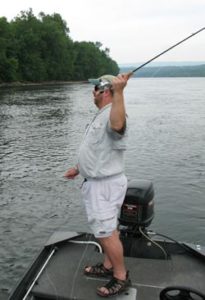
Todd Spacht hauling into the wind
For trout in a small stream environment, the flies used are often tiny and extremely lightweight. The casting distance is short (often less than 35 feet) and wind is seldom a big issue. Frankly, it’s easy to flip a bitsy fly out a short distance without wind. And while certain rods might be more pleasurable to use, almost any rod will deliver the fly to the fish without much effort.
In contrast, driving out full-sized smallmouth or largemouth flies 55 feet all day long (and often with wind in the equation) requires considerable effort and expertise on the angler’s part. And that’s why a really good rod and line combination is so critical. That’s also why smallmouth bass fans need to learn adequate casting skills, no matter how good their equipment.
Certainly, proper timing is important, since if you don’t learn to correctly pause the rod on the back and forward strokes you will never be able to make consistent casts. However, timing isn’t everything in warmwater fly casting. In fact, being able to increase your line speed is nearly as important as timing.
And that’s why everyone has to learn to haul– at least a single haul. That little tug on the line with the non-casting hand is actually pretty easy to do. And it doesn’t take long before it’s completely automatic, with little thought or effort on your part.
But that little tug on the line is almost magic. It significantly increases the line’s velocity and it instantly makes you a much better caster.
Without being able to haul, big flies are tough to cast, long casts are nearly impossible, and 20 mile an hour winds will shut you down. But with the increased line speed that a single or double haul provides, throwing big flies is fine, making 65 foot casts no big deal, and you’ll be able to punch winds and continue fishing.
DOING THE DOUBLE HAUL
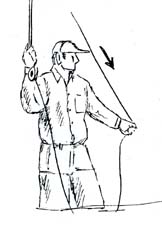
1) Start by grabbing the line in front of you.
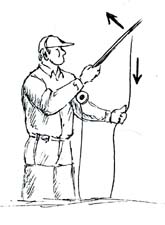
2) While bringing the rod up, haul (pull) line down quickly.
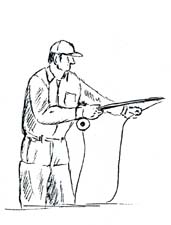
3) When the rod has stopped, your line hand should have pulled the line down to your hip.
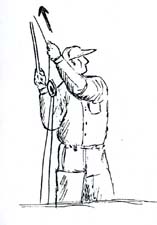
4) While the rod is drifting back during the pause, feed the line through the guides.
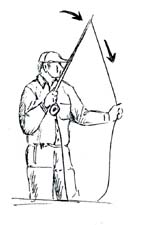
5) After your backcast has straightened out, start the forward cast and haul the line down forcefully.
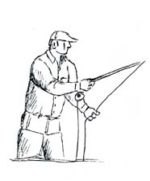
6) After completing the forward cast, release the line for shooting.
Since hauling is so essential, it’s something no serious smallmouth bass angler should neglect to learn. I offer some casting advice in the book, Smallmouth Fly Fishing, and I encourage everyone to reread the “Gearing Up” chapter. And of course, there are other ways you can learn to cast well. Watching a good video that shows hauling is helpful, or work with a competent instructor who teaches hauling. But ultimately, it’s up to you to pick up the rod and go out on the grass or water and practice, practice, practice.
With the single or double haul, throwing big flies is fine, making 65-foot casts no big deal, and you’ll be able to punch winds.
Just think of the reward– a lot more big bronzebacks on the line. That’s a mighty big incentive, if you ask me. And consider this extra bonus: You can rightfully be darn proud of becoming a good smallmouth caster. You’ll be in a fraternity of folks who I consider the best casters in fly fishing. “The few, the proud, the smallmouth bass fans.” Isn’t it time to join our ranks?


No comments yet.